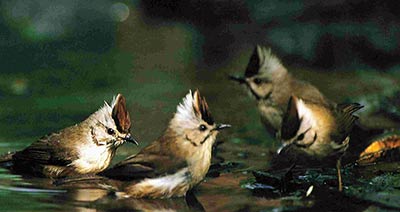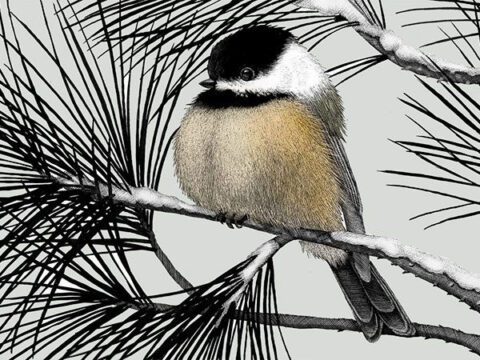Coordinated Cooperation: A Feeding Strategy that Reduces Nestling Competition
By Laura Erickson
January 15, 2010
Adult Taiwan Yuhinas coordinate feeding bouts to reduce nestling competition
How can parent birds ensure that their nestlings are fed about equally? In a recent edition of Biology Letters, Sheng-Feng Shen, a former graduate student at the Cornell Lab of Ornithology, and colleagues published the first study of a cooperatively breeding species showing that adult group members coordinate feeding visits to reduce competition among nestlings.
Conflict among nestlings can reduce the amount of food given to smaller, weaker chicks while apportioning the lion’s share to the largest, strongest young. This system is adaptive for hawks, egrets, and other species by maximizing the number of young produced in years when food is abundant while ensuring that at least one or two survive in years when food is scarcer. But conflict comes at a cost, both for smaller and less aggressive nestlings and for parent birds who waste energy producing more eggs and feeding more chicks than are likely to survive. Research on nestling begging and parental feeding in a variety of species suggests two general patterns. When parents bring single food items such as insects to the nest, only one nestling gets fed during each visit and bias toward the larger ones is strong. When parents arrive with their crop filled to feed most or all of the chicks in the same visit (typical of species such as parrots, Phainopeplas, and pigeons), chick-begging isn’t so competitive and nestlings are less noisy in general, probably attracting fewer predators.
The Taiwan Yuhina is a 5-inch songbird belonging to the Old World babbler family. Yuhinas tend to feed their young a single insect during each visit. But unlike most songbirds that do this, Taiwan Yuhinas nest cooperatively, with two or three monogamous pairs and sometimes a nonbreeding helper incubating eggs and raising young in the same nest. Sheng-Feng’s team closely monitored breeding groups in 2006 and 2007. Every adult wore colored leg bands to show its identity and a transponder so that each visit to the nest was recorded; the nests were also monitored by remote cameras and by researchers who could detect adults approaching but not entering the nest. By analyzing 1,393 feeding visits, Sheng-Feng’s team learned that adult yuhinas were much more likely to feed nestlings in large groups than in smaller groups or alone. By coordinating the timing of their arrivals to come to the nest together, the adults provided more even food distribution to their nestlings, reducing competition among them.
Originally published in the January 2010 issue of BirdScope.

All About Birds
is a free resource
Available for everyone,
funded by donors like you
American Kestrel by Blair Dudeck / Macaulay Library



